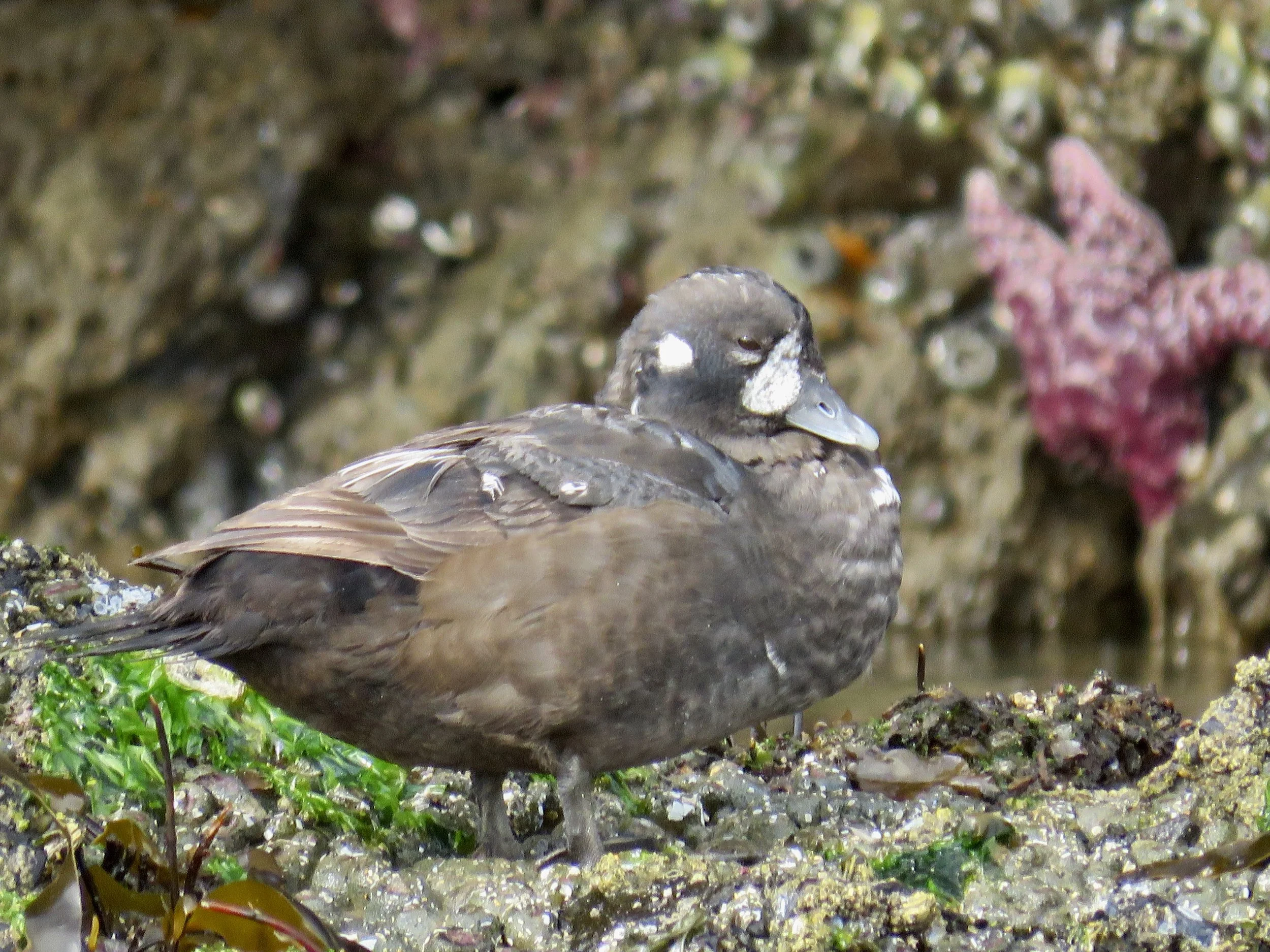Harlequin Duck (Histrionicus histrionicus)
Male harlequin duck (photo credit: Lauren Rice)
Female harlequin duck (photo credit: Molly Sultany)
Description: Both the common and scientific names (harlequin and histrionicus, respectively) of the harlequin duck are inspired by the colorful plumage of the male, which appears almost theatrical. Adult harlequin ducks are about 30 cm in length and weigh about 0.635 kg. Their bodies are mostly dark brown to black with a small white spot behind their eyes and a large white spot in front of their eyes. The males also have a lighter brown patch on the wings and white stripes on their neck and chest. In the wild, harlequin ducks have been known to live for over 14 years.
Habitat: Harlequin ducks are found on the Pacific and Atlantic Coasts of the United States. Along the Pacific, they are found on both Oregon and Washington’s coasts, and can be found as far north as Alaska. As a sea duck, harlequins are found in coastal habitats. They also inhabit rivers, streams, and lakes.
Nesting: Although it is not uncommon to see harlequin ducks at Haystack Rock in the summer, this species of bird does not nest at the rock. Harlequin ducks nest inland in forested areas. The female lays 5 to 7 eggs and incubates them for 27 to 30 days. The chicks are able to leave the nest and forage for food shortly after hatching, however the mother watches after the young for at least 5 to 6 more weeks when they learn to fly.
Diet: Harlequins rely on their diving skills to feed on benthic invertebrates (invertebrates living on the ocean floor) in the intertidal zone. This includes marine creatures such as snails, chitons, limpets, and more.
Tide Pool Tidbits:
Although their average lifespan in the wild is about 14 years, the oldest recorded wild harlequin duck was a 20 year old male found in British Columbia. When found in 2014, he was identified by his band that he had received in Alberta in 1995.
Out of all species, harlequin ducks suffer the greatest amount of broken bones.
Reference: The Cornell Lab



